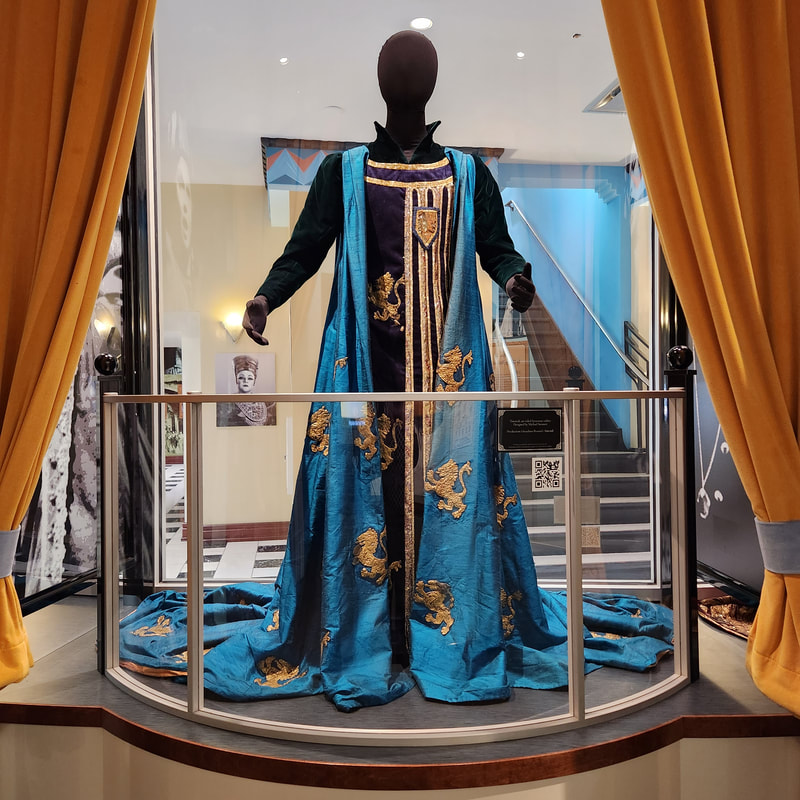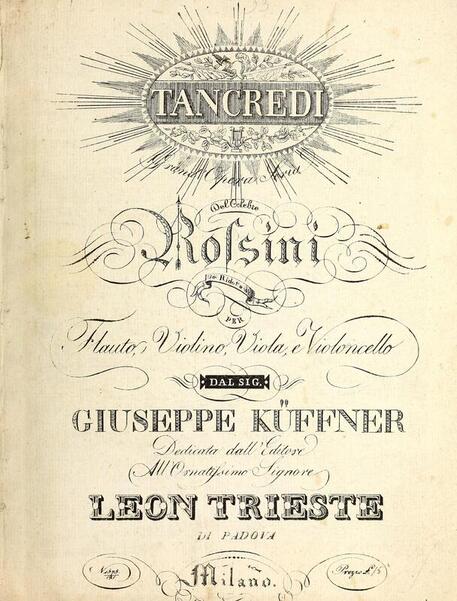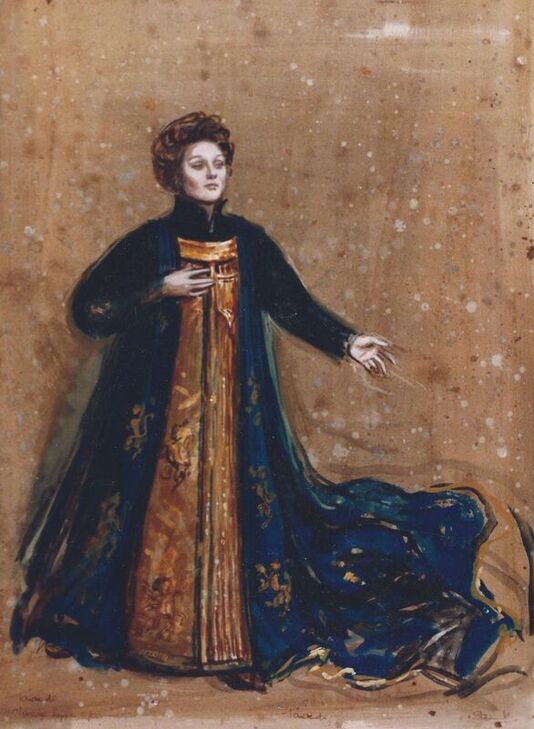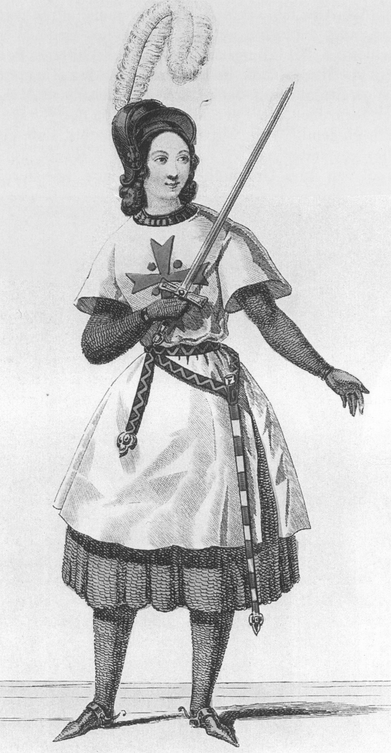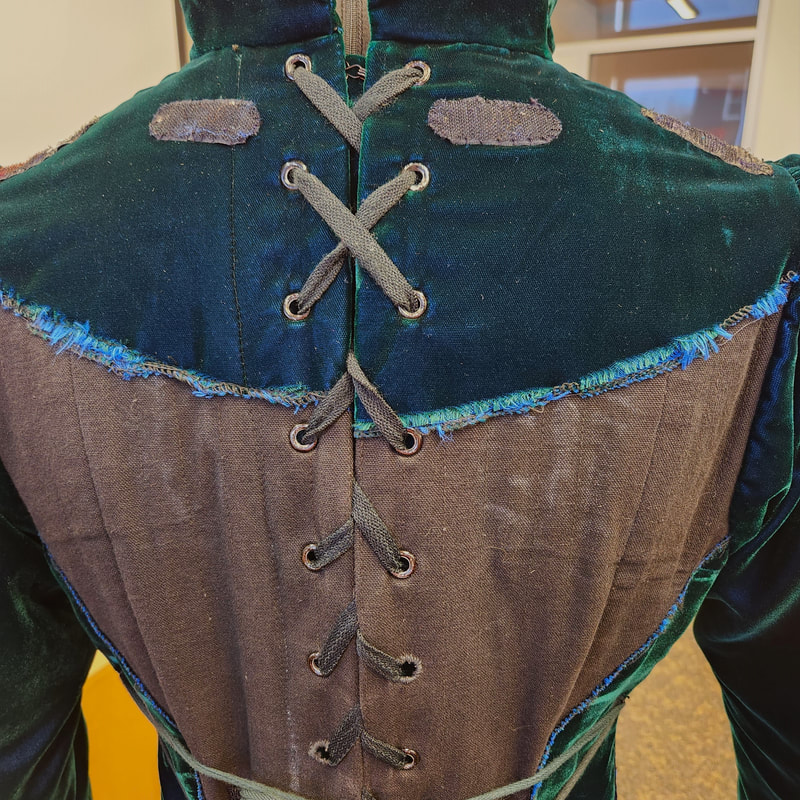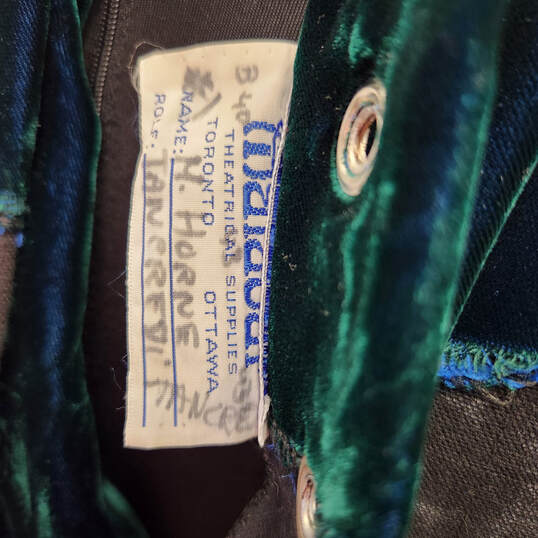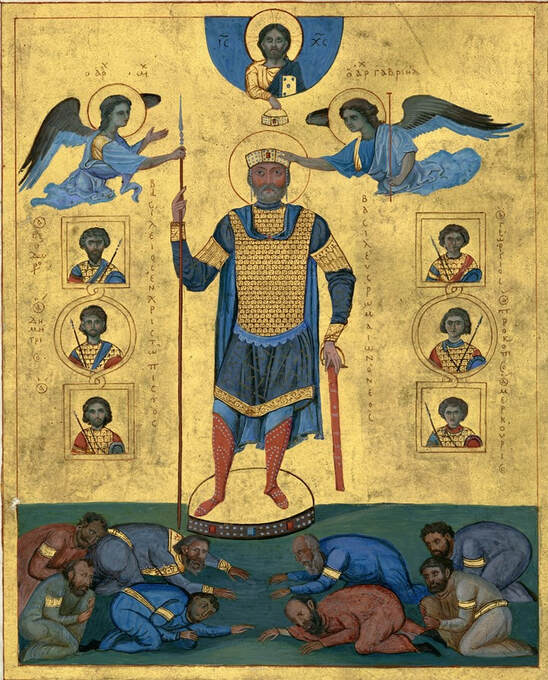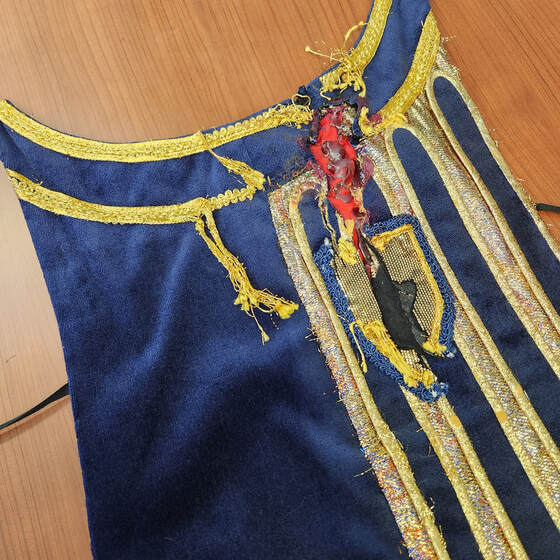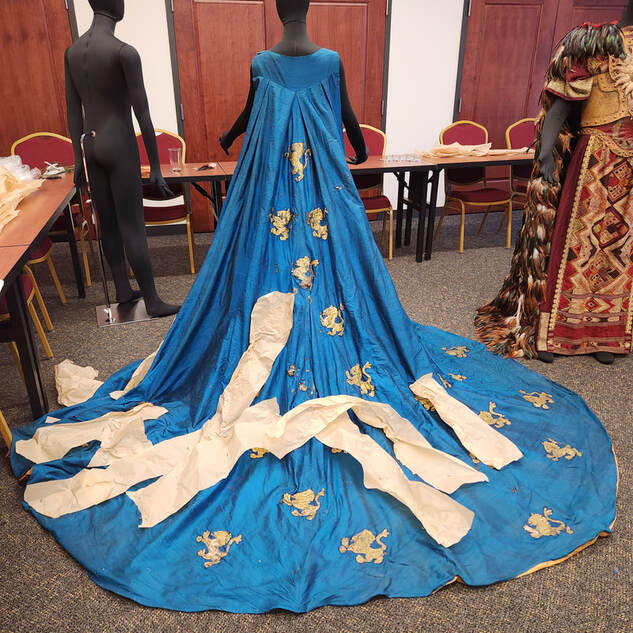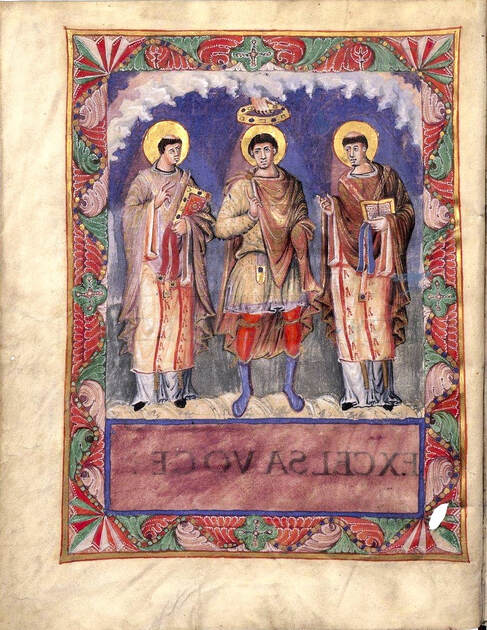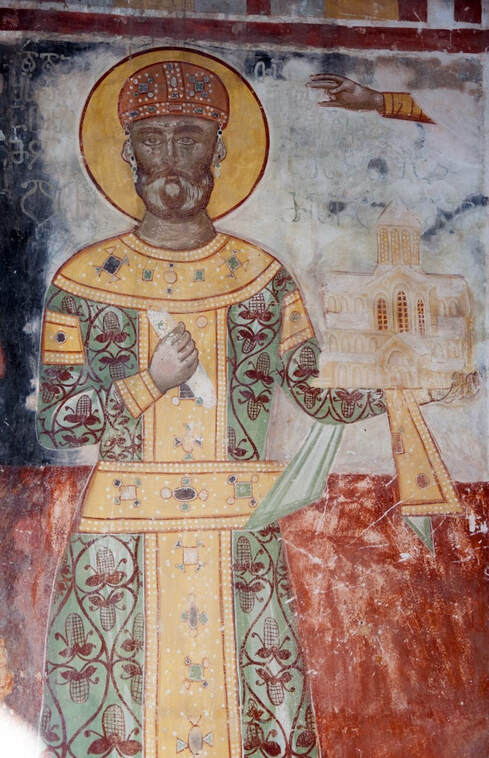tancredi
Designed by Michael Stennett
Production: Gioachino Rossini's Tancredi
Collection of Sarasota Opera Association, Inc.
Production: Gioachino Rossini's Tancredi
Collection of Sarasota Opera Association, Inc.
About the Character
Rossini’s Tancredi is based on a play by the French philosopher Voltaire. It is, ultimately, a passionate story about patriotism, love, and defending self-honor at all costs. The opera premiered in 1813 at the Teatro La Fenice in Venice, which the museum’s theater is modeled after. The title character of the opera is a soldier living in exile who returns to his hometown of Syracuse to defend the city against the threat of invasion. He is also in love with Amenaide, the daughter of the Syracusan senate, who has been promised in marriage to another.
Tancredi is set around the year 1000 AD. At the time the opera was written, Europe was in the midst of a romantic period and looked affectionately and fondly back to the Middle Ages as a time of imaginary chivalry and simplicity. This renewed interest in medievalism was part of a broader Gothic revival that would last well into the 20th century. The idea of noble knights, fair princesses, and wronged noble maidens was ideal for operatic drama.
The role of Tancredi was performed by Marilyn Horne in several different productions of the opera. It may seem unusual for a woman to play the role of a handsome young knight, but the part was intentionally written for mezzo-soprano. Artistic forms in the 19th century and earlier often portrayed young men as beardless, somewhat feminine, and generally not quite having matured into the state of full manhood. The mezzo voice could reach lower registers while also approaching the range of a soprano, much like a boy when his voice begins to change, thus giving the vocal illusion of a youth, and not a man.
About the Costume
This costume was created for Marilyn Horne for the Lyric Opera of Chicago production of Tancredi in 1989. Marilyn Horne is just over 5 feet 2 inches in height. The model for this costume seen here is approximately 6 feet tall. Marilyn frequently had to wear tall boots to create the illusion of being a soldier, knight, or any of the other so-called “trouser roles” in which she performed.
The overall look of this costume is meant to create a sense of drama, not historical authenticity. The cloak is enormous and was constructed to loop over the arms. This was done to prevent the long, heavy garment from potentially coming loose during a performance. In the real world of the Middle Ages, cloaks were secured with a clasp of some type, or a pin-brooch called a fibula.
The costume is made of three separate garments, the thick velvet tunic, the outer tunic with the shield over the heart, and the cloak. Marilyn would have been laced into the under-tunic and then the outer garment was attached with Velcro and a few small clasps. This was done for a quick change at the end of the opera when Tancredi is mortally wounded in battle. You can see below the alternate “distressed” version with a gaping wound in the area of the heart, and various signs of struggle.
The dramatic cape is made of turquoise and gold silk. The lions, like the brocade design on Isaura’s dress, were created with painted epoxy. Over time, this epoxy has become tacky and you can see in the image below that each of the lions must be pinned with a protective archival paper to keep them sticking to the delicate silk during shipping. It was a tedious process to ensure the cloak was properly packed and dressed for this exhibition.
Inspiration
Below are some illustrations from the period in which Tancredi is set. You can see the differences in structure and form between what a knight, king, or soldier would have worn around the year 1000 AD versus Michael Stennett’s vision.

